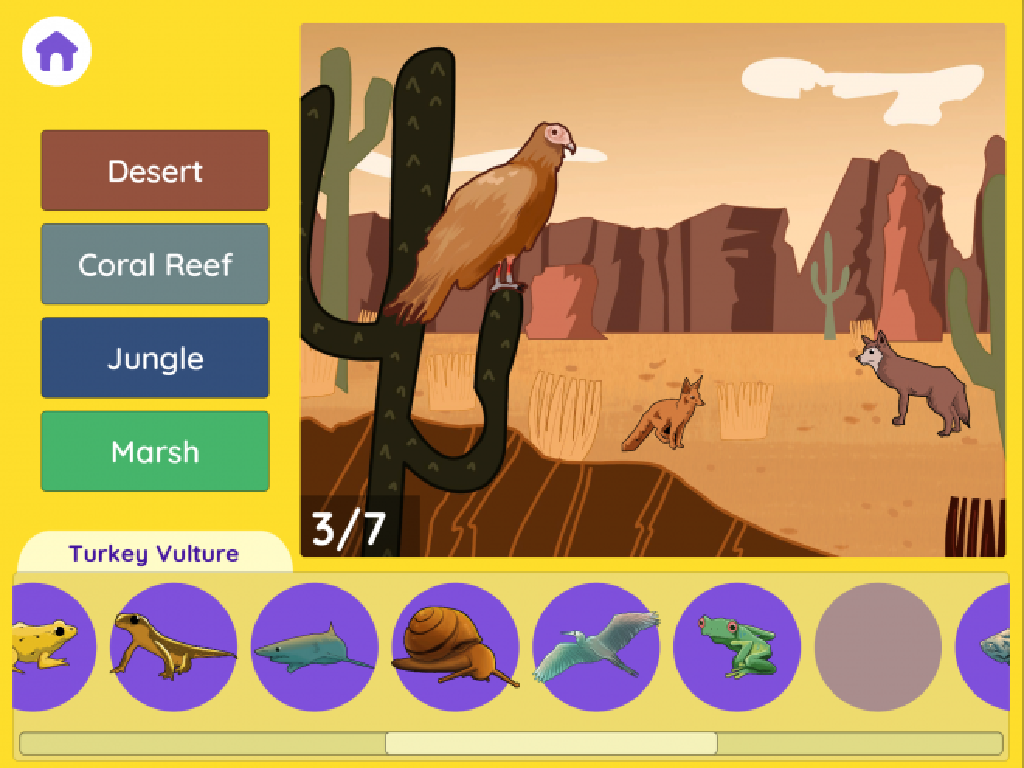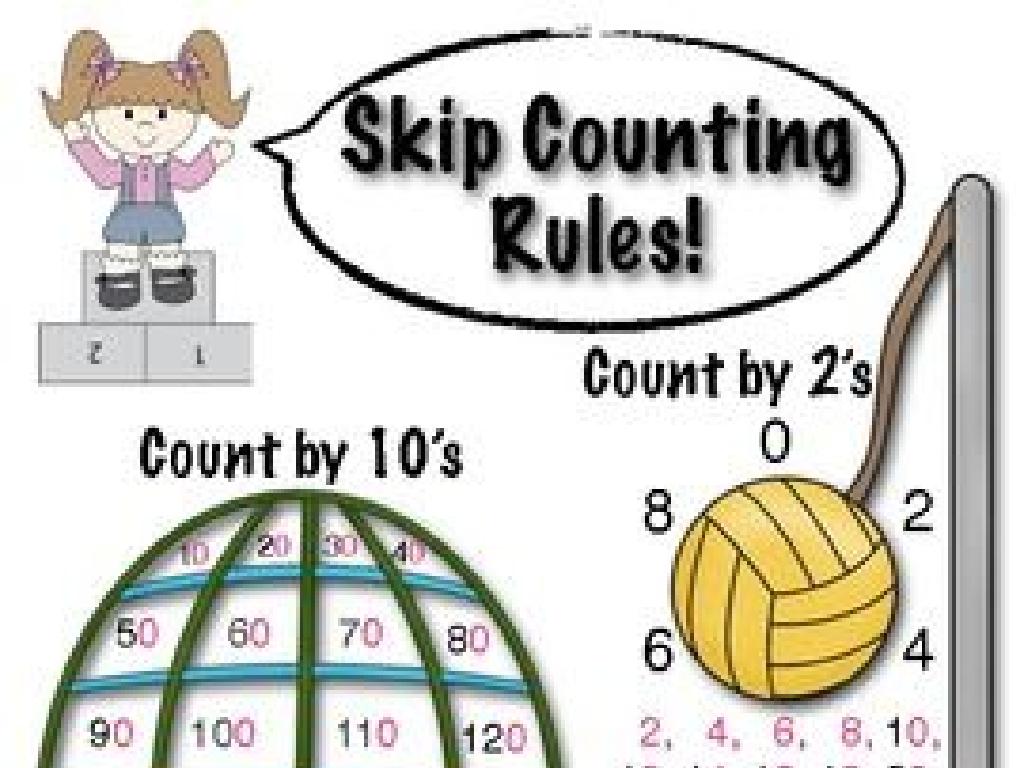Multiply 2-Digit Numbers By 3-Digit Numbers
Subject: Math
Grade: Fifth grade
Topic: Multiplication
Please LOG IN to download the presentation. Access is available to registered users only.
View More Content
Multiplying Big Numbers!
– Grasp the concept of multiplication
– Think of multiplication as repeated addition
– Multiplication’s role in daily life
– Used in budgeting, cooking, and planning
– Multiply 2-digit by 3-digit numbers
– Stack the numbers and multiply each digit
– Practice with real-world examples
– Solve problems involving shopping or building
|
This slide introduces students to the concept of multiplication as a foundation for learning how to multiply larger numbers. Begin by explaining multiplication as repeated addition, which they are already familiar with. Highlight the importance of multiplication in everyday life, such as calculating expenses, preparing recipes, or planning events. Then, guide them through the process of multiplying 2-digit numbers by 3-digit numbers using the standard algorithm. Provide real-world examples where they can apply this skill, such as determining the total cost of multiple items while shopping or calculating materials needed for a construction project. Encourage students to practice these skills with various examples to build confidence and proficiency.
Quick Review: Multiplication Basics
– Refresh on multiplication facts
– Go over the times tables we’ve learned
– Understand multiplication as addition
– If we have 4 groups of 3, that’s 3+3+3+3
– Use tables for quick recall
– Remembering our 2s, 5s, and 10s helps with bigger numbers
– Practice with examples
|
This slide is aimed at revisiting the fundamental concepts of multiplication to ensure a strong foundation before moving on to more complex problems. Start by reviewing basic multiplication facts, which are essential for quick and accurate calculation. Emphasize the concept of multiplication as repeated addition, which helps students visualize the process. Encourage the use of multiplication tables to aid in faster recall, especially for 2s, 5s, and 10s, as these are the building blocks for multiplying larger numbers. Incorporate practice examples to demonstrate these concepts in action. This review will prepare students for the next step: multiplying 2-digit numbers by 3-digit numbers.
Multiplying 2-Digit by 3-Digit Numbers
– Break down the multiplication steps
– Example: Multiply 34 by 156
– Start with 34 x 6, then 34 x 50, and 34 x 100
– Align numbers carefully
– Each digit of 34 must be under the correct place value of 156
– Practice with different problems
– Try 21 x 342 or 46 x 213 to test your skills
|
This slide introduces the process of multiplying a 2-digit number by a 3-digit number. Emphasize the importance of breaking down the problem into smaller, more manageable steps. Use the example of 34 x 156 to demonstrate the process: multiply 34 by each digit of 156, starting with the units place, then tens, then hundreds, and summing the results. Stress the importance of aligning numbers correctly to maintain place value accuracy. Encourage students to practice with different problems to solidify their understanding and to check their work for errors in alignment and addition.
Multiplication: Carrying Over
– Understanding carrying over
– When multiplying, if a sum is 10 or more, we carry over to the next place value.
– Practice with an example
– Let’s multiply 23 by 5. Write 5 under the ones, carry the 1 to the tens.
– Group activity: 45 x 123
– Together, we’ll solve 45 x 123 step by step, carrying over when needed.
– Discuss our results
|
This slide introduces the concept of carrying over during multiplication when sums exceed 9. Begin by explaining the process of carrying over to the next place value, which is crucial for accurate multiplication. Use a simple example, such as 23 x 5, to demonstrate carrying over in a clear, step-by-step manner. Then, engage the class with a group activity multiplying 45 by 123, encouraging students to participate in solving the problem on the board. After completing the activity, discuss the results with the class to ensure understanding. Provide additional practice problems for students to work on individually or in small groups.
Practice Makes Perfect: Multiplication
– Class problem: 67 x 208
– Let’s multiply step by step together
– Discuss common multiplication errors
– Misalignment of numbers, forgetting to carry over
– Tips for accurate calculations
– Double-check each step, use estimation for quick checks
– Methods to verify your answers
– Use reverse operations like division to check work
|
This slide is aimed at reinforcing the concept of multiplying 2-digit numbers by 3-digit numbers through a collaborative class problem. Start by solving 67 x 208 together, ensuring each step is clear and understood. Highlight typical mistakes such as misaligning numbers or not carrying over, and how to avoid them. Share tips like checking each multiplication step and using estimation to see if the answer is reasonable. Finally, teach students to verify their answers by using the inverse operation, such as dividing the product by one of the original numbers to see if it matches the other number. Encourage students to ask questions and discuss any difficulties they encounter.
Let’s Practice Multiplication Together!
– Pair up and solve multiplication problems
– Work on 52 x 309 and 76 x 415 with a partner
– Share your solutions with the class
– Explain how you solved the problems
– Discuss the methods used
– Did you use the standard algorithm or another strategy?
– Q&A session to clear confusion
|
This slide is designed for an interactive class activity focused on multiplying 2-digit numbers by 3-digit numbers. Students should pair up and work on the given problems, encouraging collaboration and discussion of different methods used to find the solution. After solving, they will share their answers and explain their process to the class, fostering a learning environment where students can learn from each other. The Q&A session at the end will help address any misunderstandings or questions, ensuring all students are comfortable with the multiplication process. Possible activities for different pairs could include using manipulatives, drawing models, or explaining each step verbally.
Class Activity: Multiplication Relay
– Form groups for relay
– Solve problems step by step
– Each student multiplies one digit, then passes it on
– Pass to the next after each step
– First team to finish wins!
– Ensure accuracy for victory!
|
This activity is designed to encourage teamwork and reinforce the concept of multiplying 2-digit numbers by 3-digit numbers. Divide the class into small groups. Each group will work together to solve a set of multiplication problems. One student will multiply a single digit and then pass the problem to the next student to continue the process. This relay continues until the entire problem is solved. The first team to correctly solve all their problems wins. Make sure to prepare different sets of problems for each group to prevent copying. Encourage students to check each other’s work for mistakes before passing it on to ensure their team’s success. This activity promotes collaborative learning and helps students practice breaking down larger problems into manageable steps.
Homework and Wrap-up: Practice Multiplication
– Practice: 81 x 242 and 59 x 314
– Review multiplication steps
Recall place value and carrying over
– Prepare for next class
We’ll tackle even bigger numbers soon
– Keep practicing for mastery
|
For homework, students are assigned two problems to reinforce the day’s lesson on multiplying 2-digit by 3-digit numbers. Remind them to follow the steps discussed in class, including writing numbers correctly, multiplying each digit, carrying over when necessary, and adding up all the partial products. Next class, we will build on this foundation by introducing multiplication with larger numbers. Encourage students to practice regularly as repetition is key to mastering multiplication. Provide additional problems if requested and remind them to check their work for accuracy.






